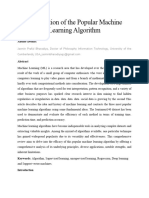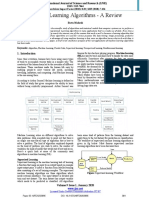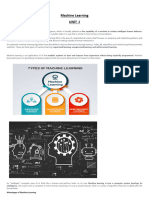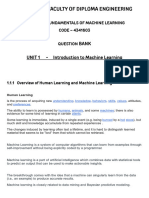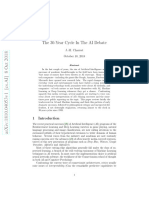0% found this document useful (0 votes)
11 views5 pages01 Important Machine Learning Algorithms
The document provides an overview of important machine learning algorithms, categorized into supervised, unsupervised, semi-supervised, and reinforcement learning algorithms. Key algorithms discussed include Decision Trees, Random Forests, Support Vector Machines, Naïve Bayes, Markov Models, Artificial Neural Networks, k-means, Principal Component Analysis, and Q-Learning, along with their advantages and disadvantages. The text serves as a foundational introduction to these algorithms, which are explored in more detail in subsequent chapters.
Uploaded by
R K RojaCopyright
© © All Rights Reserved
We take content rights seriously. If you suspect this is your content, claim it here.
Available Formats
Download as DOCX, PDF, TXT or read online on Scribd
0% found this document useful (0 votes)
11 views5 pages01 Important Machine Learning Algorithms
The document provides an overview of important machine learning algorithms, categorized into supervised, unsupervised, semi-supervised, and reinforcement learning algorithms. Key algorithms discussed include Decision Trees, Random Forests, Support Vector Machines, Naïve Bayes, Markov Models, Artificial Neural Networks, k-means, Principal Component Analysis, and Q-Learning, along with their advantages and disadvantages. The text serves as a foundational introduction to these algorithms, which are explored in more detail in subsequent chapters.
Uploaded by
R K RojaCopyright
© © All Rights Reserved
We take content rights seriously. If you suspect this is your content, claim it here.
Available Formats
Download as DOCX, PDF, TXT or read online on Scribd
/ 5

